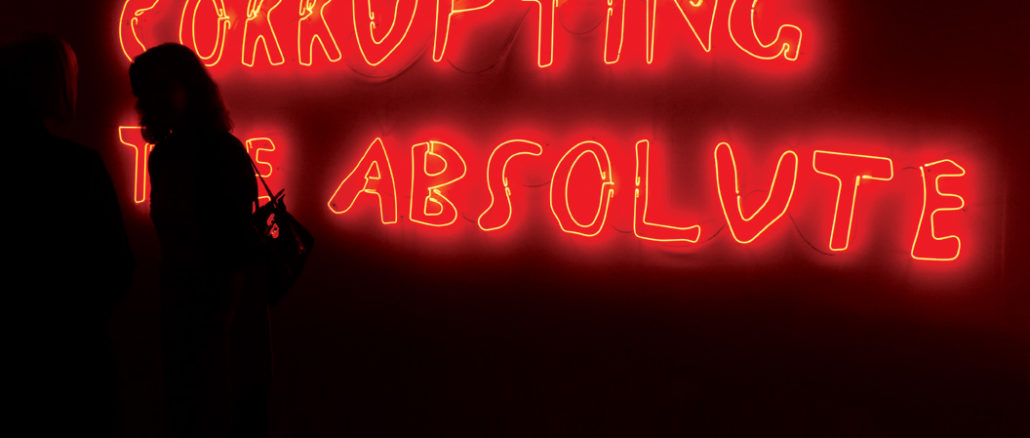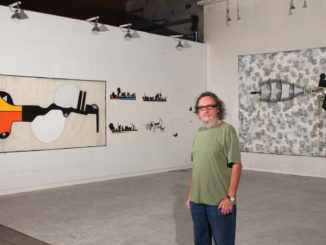
For most of us thinking Art Basel Miami Beach week as the busiest time for the arts ever, well… it may have been so far, but getting outside of Miami for another art fairs gathering could prove us wrong. Although the first week of December in Miami seems to be getting out of hand (24 art fairs in 2007), it’s just a part of an already consolidated “art fairs phenomenon” sweeping the art world. From March 27th to 30th 2008, the Armory Show in New York City set the agenda for another 10 art fairs bringing together hundreds of international art galleries and dealers in just a week that many called a “true barometer” for measuring where contemporary art stands today.
While these fairs are a fantastic scenario for looking at art, and consequentially selling it, there was another scenario that was less conditioned by the current trends of the art market. Eclipsed by the “glam” of the fairs, the Whitney Biennial also brought together more than 80 artists. The curatorial effort intended to “characterize” the state of American Art today, by “exploring the networks that exist among contemporary artists and the work they create”. Apparently, expectations on American Art were higher than they usually are. Already been called by the New York Times “A biennial for a recession time”, the Whitney Biennial hasn’t enjoyed critical acclaim.
About 10 years ago, art fairs were only second to art biennials, where artists and curators ruled, and organizers – mostly local government organizations – appealed to sponsors without significant revenue motivations. Biennials where the perfect ground for developing and showing new strategies. Artists from all over the world were – and still are – invited to present their latest productions away from the art market’s realm, reaching out to the most intellectual side of the art-world. With a long history of successful editions, events such as the Venice Biennial or the São Paulo Biennial paved the way for many other events to follow their model. Gradually, the number of international biennials reached its peak, crowning themselves as the queens of contemporary art.
While effective in providing an edge for emerging artists, international biennials have proven to be inefficient for the market by having little or no impact on artists commercial success. At a biennial, artists network, hustle to get promoted to higher grounds (museums and curated exhibitions) but usually get little – if none – support from their representing galleries that look down at the biennials as a waste of time and effort. Art fairs however, used to be reserved for the art dealers and galleries – exclusive if you like – offering basically zero attractive for artists, as it’s known about their inability to sell their own work. At an art fair, business was conducted as usual, quietly and away from the public eye. Biennials stood out for the “true” appreciation of the arts, while art dealers dealt with collectors and wealthy art connoisseurs backstage. But this was about to change.
Not surprisingly, the last 5 years have seen art fairs rapidly grow to become the preferred destination for the art world. This has resulted in what many are calling a “concerning commodification of the arts” but Art has always being a commodity, despite many of us still striving for keeping the “free true art” dream alive. Biennials are still around, although they seem to represent the “yesterday” of the art world and it is harder to find “established” artists interested in participating. Biennials have only prevailed as a launching pad for less fortunate art productions with limited access to the art market (Third world biennials), and most artists and dealers show little interest in arranging travel and production logistics to Istanbul or Qatar, …for instance. It all made sense in a time when biennials where undoubtedly the place to be, but today’s attention has definitely shifted towards the new art world divas. I guess you can also look at art while in at art fair, but if it’s difficult for an artist or a curator to sell an artwork, it’s definitely more difficult for an art dealer to properly curate a show – not to even mention to produce art -. Bottom line is that the art world has never been about art, not even about promoting it; has always been about selling it.
Voila!. Art fairs have succeeded in generating the most attractive scenario for promoting and appreciating contemporary art today. Borrowing many strategies from their older sisters, art fairs not only gather an international array of galleries and dealers, but also manage to present an impressive roster of public events and special projects with participating artists and personalities – many of whom we already know from their work in the non-for-profit sector of the arts – such as museum and biennial curators, prominent art writers and critics, and why not, art entrepreneurs and celebrities (whatever that means). It’s above all a sign of the times. I think that under the current world economy, monies are carefully and wisely invested, and public sectors such as art and education are the first to suffer shortages of funds. Art fairs on the other hand, are intrinsically a business holding the common interest among its participants: to legitimize art through the art market.
The Whitney Biennial didn’t accomplish much on its end. Holland Cotter has written for the New York Times: “…the overall tenor of the show is low-key, with work that seems to be in a transitional, questioning mode, art as conversation rather than as statement, testing this, trying that. Assemblage and collage are popular. Collaboration is common. So are down-market materials – plastic, plywood, plexiglass – and all kinds of found and recycled ingredients, otherwise known as trash.”
Both, Art as a “process” and as a “commodity” have been assimilated by the art world since I can’t even remember, and their best representatives are included in the most important American Museum’s collections. Having said that, I cannot imagine the author missing the fact that she was looking at a type of art other than a product. But even if her words show a certain degree of animosity, they’re not less true.
A highly consumerist society – America – has dragged art down to the basics of commerce and it seems that artists find a big deal of difficulties escaping from it. Economy is in recession so American art seems to be. History shows that the Avant-Garde have always been associated to socio-economic turmoil; the Soviet Revolution, the Great Depression, the Berlin Wall and the Perestroika – just to mention a few – were periods when art was given the “turn of the screw”. Works at the Whitney Biennial however, appeared more as pitiful victims of the current economic situation than to a statement confronting it, showing less than what it takes to challenge the status quo of commerce.
The curatorial effort sought to brake away from the market but failed due to the apparent lack of ideological commitment of the artists. Most of them, especially the youngest ones, come from a breed that finds realization in selling their work and chasing reviews on the same newspapers that now seem to rampage at them; a breed that has enjoyed the favors of art patrons and collectors even before they got out of school and now they show a manifested inability to transcend their own paradigms. With only few exceptions, artists at the Whitney Biennial didn’t succeed in challenging an art market that like Saturn, devours his own children.
It may be now a good time for rethinking strategies and for reestablishing priorities. Art must come first, so leap into the void my friends, and may the force be with you!


Be the first to comment